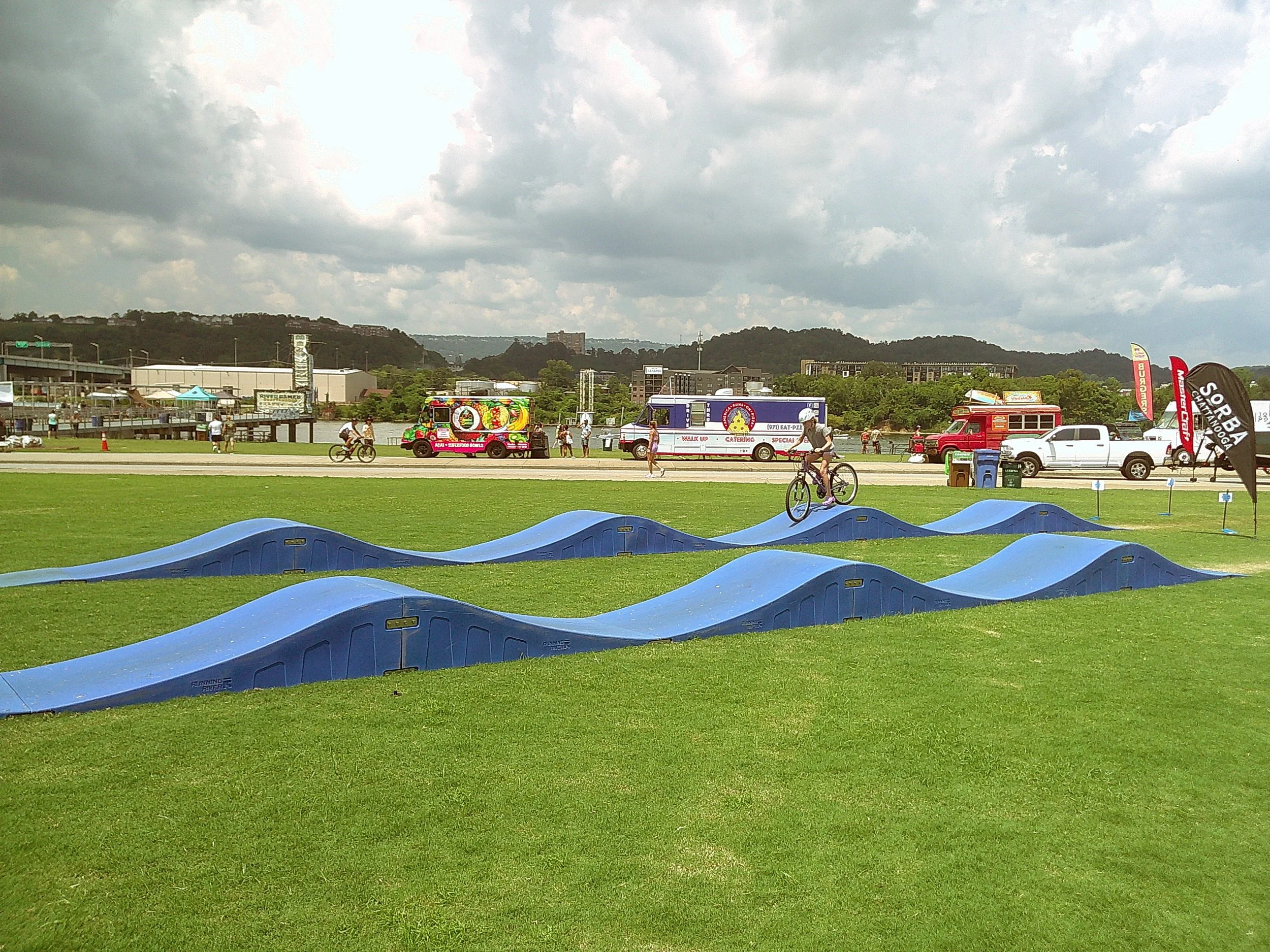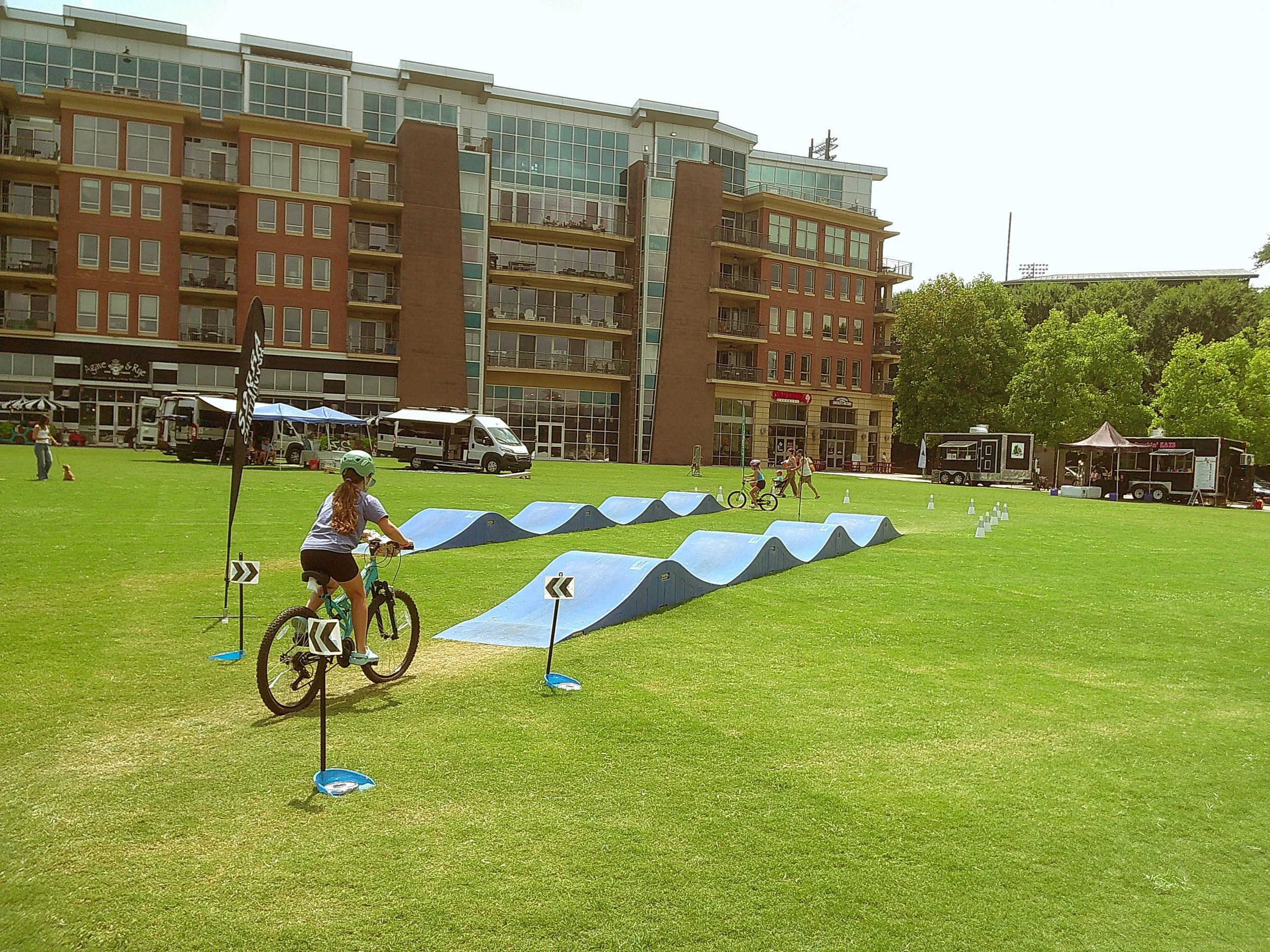The Case for More Exploration and Play
This weekend the second annual River Games was held in Chattanooga at Ross’s Landing. Claiming to be the “South’s largest extreme sports festival,” the three day event featured wakesurfing competitions, slacklining, diving, skate ramp and kayak launches, and Red Bull Creepers, an international climbing competition that made its U.S. debut.
I served as a vendor pulling double-duty for SORBA Chattanooga and White Oak Bicycle Co-op by offering an “activation” on the greenspace with our modular pumptrack. Since the pumptrack’s purchase by River City Company last September, this is only the fourth time the pumptrack has been available to the public.
Anecdotally, the pumptrack was by far the most popular activity amongst the activation booths. Other activations included a trampoline, nets to lounge in, lawn games, and the different jumps/launches into the water that the public could do. It’s hard to say for sure, as I don’t know if other activations counted their sign-ins, but 385 people throughout the weekend signed the waiver to ride the pumptrack. Dozens more rode but didn’t sign the waiver.
Three hundred and eighty five sign-ins isn’t that impressive when the festival was expecting 10,000-12,000 attendees if you included Riverfront Nights and the music concerts that followed each night. What was impressive though, was the amount of children simply running up and down the rollers every night after we closed it down at 8 p.m. As one of my partners at the city witnessed and stated,
“This proves the case for more play structures at the Riverfront.”
That quote stuck inside my brain like a fly caught in a spiderweb. That is why I continue to keep advocating for a permanent pumptrack, bicycle playgrounds, and traffic gardens.
This type of infrastructure promotes exploration and play by bicycle far more than a bike lane or a trail. Sure, it’s a good way to exercise and recreate, but it further pushes the boundary of balance, coordination, body positioning, and personal challenge. Those humps on the pumptrack were taller than some of the kids riding them. Of course, falls happened and a few tears were shed (especially with the heat) but more often than not, children and adults rode away with a smile, undoubtedly feeling a sense of pride and pleasure.
From a professional mountain bike coaching stand point, pumptracks are a great place to hone real trail skills like pumping for efficiency, cornering, and pressure control. But what I witnessed this weekend goes beyond a hard skill. Exploration and play on a bicycle is fun, boosts confidence, and enhances creativity and problem solving skills. Since this “activation” was technically volunteer and not part of my safety programs, I couldn’t log it as a program and therefore, I didn’t do any teaching. Kids had to figure out how to get over the rollers themselves, judging speed, distance, and height, all while mixing in the complexity of balance and steering. Being able to juggle all those things at once when you don’t even reach double digits in age is an impressive thing to witness.
It’s been my theory for years that bicycles are one of man’s greatest inventions. They are transportation, a tool for exploration and adventure, and obviously, a great way to exercise and get outside. What I witnessed this weekend with a “pop-up” pumptrack was that experiential, play based learning can happen at almost any age. Our infrastructure and built environment play a big role in our health and can provide opportunities for recreation, exploration, and play. Pumptracks, bicycle playgrounds, and traffic gardens are simply new opportunities to expand what we already know: Bicycle exploration enhances physical and cognitive growth and encourages social interaction through a built environment.

